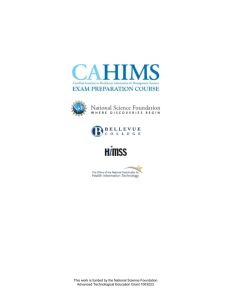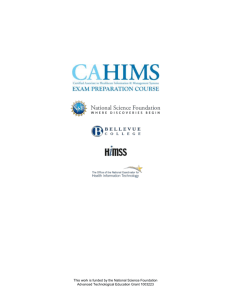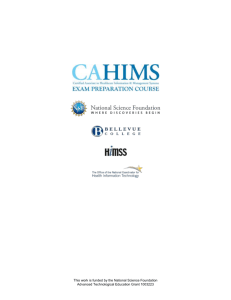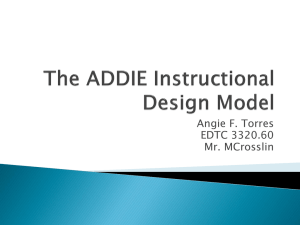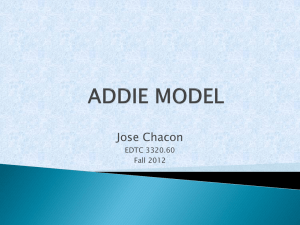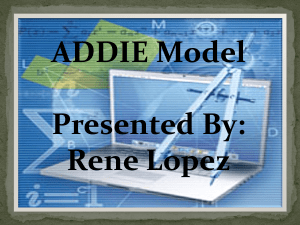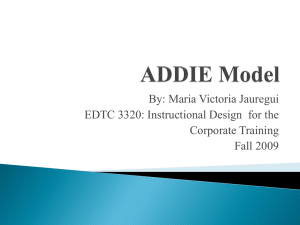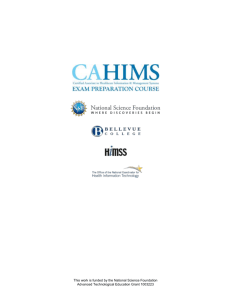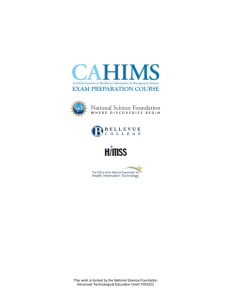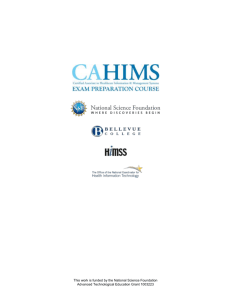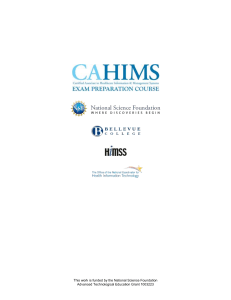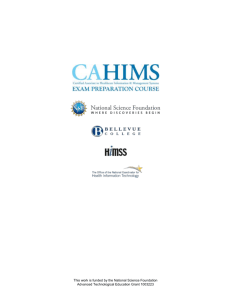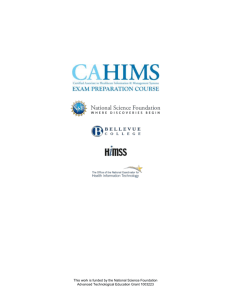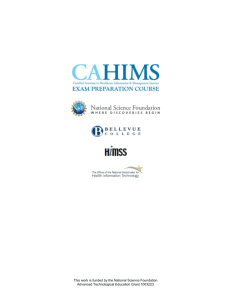5.2-Assessment-Key
advertisement
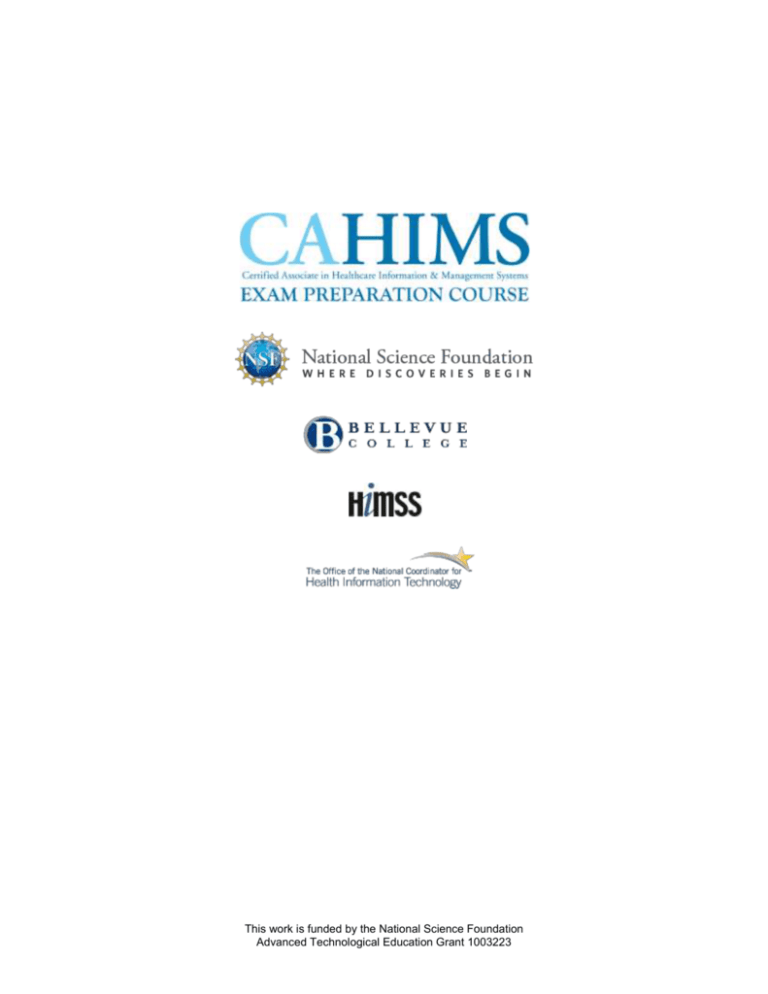
This work is funded by the National Science Foundation Advanced Technological Education Grant 1003223 The CAHIMS Exam Preparation Course and the CAHIMS exam are the result of collaboration between the Life Science Informatics Center at Bellevue College and the Healthcare Information and Management Systems Society (HIMSS). Significant content found in the CAHIMS Exam Preparation Course stems from the Office of the National Coordinator for Health Information Technology. Creation of the CAHIMS Exam Preparation Course and the CAHIMS exam was made possible through support from the National Science Foundation (NSF). Curriculum Team: Margaret Schulte, DBA Michèle Royer, PhD Nathan Savage, MLIS This work is funded by the National Science Foundation Advanced Technological Education Grant 1003223 Section 5 - HIMS Selection and Acquisition Lesson 5.2 - End User Training and Support Assessment Questions Answer Key Lecture 1 1. According to the Instructional Systems Design method, which of the following is the first step in the recommended training cycle? *a. Analyze b. Design c. Develop d. Evaluate Answer: a Lecture/Slide: 9-10 2. The recommended training cycle of the Instructional Systems Design method can best be described as which kind of process? a. Bi-directional *b. Cyclic c. Linear d. None of the above Answer: b Lecture/Slide: 2 Lecture 2 3. Which of the following identify the three styles of learning? *a. Visual, auditory, and kinesthetic b. Affective, cognitive, psychomotor c. Visual, affective, and cognitive d. Auditory, psychomotor, and visual Answer: a Lecture/Slide: 20 This work is funded by the National Science Foundation Advanced Technological Education Grant 1003223 Page 1 4. According to Bloom’s Hierarchy of Cognitive and Affective Learning Outcomes, which of the following is at the lowest level? a. Apply b. Create c. Understand *d. Remember Answer: d Lecture/Slide: 25 5. According to Knowles’ Principles of Adult Learning, adults must be which of the following in order for learning to take place? a. Partners in their own educational plans b. Invested in their educational experience c. Presented with relevant material d. A and B *e. A, B, and C Answer: e Slide/Lecture: 10 Lecture 3 6. Which of the following is NOT an example of an Instructional Systems Design Model? a. ADDIE *b. Blooms c. Kemp d. Dick & Carey Answer: b Lecture/Slide: 3 This work is funded by the National Science Foundation Advanced Technological Education Grant 1003223 Page 2 7. Which phase of the ADDIE model of instructional design includes establishing instructional goals and objectives? *a. Analysis b. Design c. Development d. Implementation e. Evaluation Answer: a Lecture/Slide: 5 8. Which phase of the ADDIE model of instructional design is marked by the integration of technologies and project revision? a. Analysis b. Design *c. Development d. Implementation e. Evaluation Answer: c Lecture/Slide: 7 9. Which phase of the ADDIE model of instructional design includes ensuring that all equipment needed for the training is in place and that all technological applications are functional? a. Analysis b. Design c. Development *d. Implementation e. Evaluation Answer: d Lecture/Slide: 8 This work is funded by the National Science Foundation Advanced Technological Education Grant 1003223 Page 3 Lecture 4 10. Which of the following is not the purpose of an objective? a. Guides the teacher; helps with the preparation of assessment tools to measure student achievement b. Guides the learner; helps him/her focus and set priorities *c. Statements about what students will gain from instruction d. Allows for analysis in terms of the levels of teaching and learning Answer: c Slide: 8 11. Which of the following is NOT a characteristic of a well-written objective? a. Specific b. Concise c. Measurable *d. Systematic Answer: d Slide: 5 12. Which of the following is an example of a non-functional verb that should NOT be used when constructing learning objectives? *a. Understands b. Modify c. Applies d. Describes Answer: a Slide: 20 This work is funded by the National Science Foundation Advanced Technological Education Grant 1003223 Page 4
